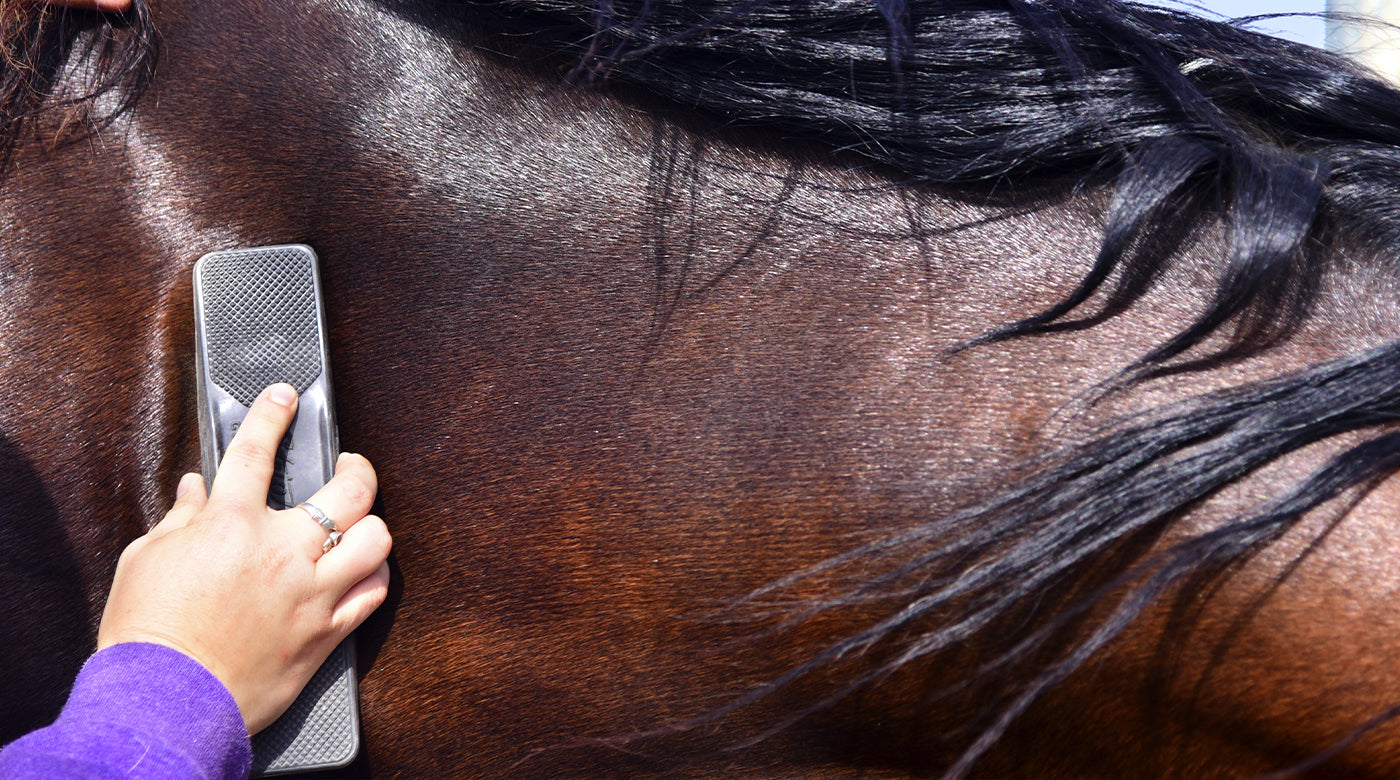SPECIALS: up to 35%SAVINGS on Bundles+FREE Shipping on USA orders over $35
SPECIALS: up to 35%SAVINGS on Bundles+FREE Shipping on USA orders over $35
Add description, images, menus and links to your mega menu
A column with no settings can be used as a spacer
Link to your collections, sales and even external links
Add up to five columns
Add description, images, menus and links to your mega menu
A column with no settings can be used as a spacer
Link to your collections, sales and even external links
Add up to five columns
Add description, images, menus and links to your mega menu
A column with no settings can be used as a spacer
Link to your collections, sales and even external links
Add up to five columns
Add description, images, menus and links to your mega menu
A column with no settings can be used as a spacer
Link to your collections, sales and even external links
Add up to five columns
The importance of massaging your animal’s fascia
April 17, 2020 2 min read

Like us, horses and companion animals have a network of connective tissue beneath their skin known as fascia that needs to be stretched in order to optimize mobility. Massage can help accomplish this.
Beneath your animal’s skin lies a web of fascia – bands of soft tissue made up primarily of collagen, elastin fibers, and water. Over time, fascia can become tight and restricted, hindering mobility and compressing the organs, muscles and nerves it encases. Whether you have horses, dogs or cats, it’s your job to ensure that their fascia is stretched and smoothed on a regular basis to prevent fascial adhesions from occurring. Exercise and gentle stretching sessions work well, but massage is another easy and effective solution that you can incorporate into your daily grooming sessions.
Understanding fascia
Similar in appearance to a layer of plastic wrap, fascia works to support, separate, connect and protect all the different components of the internal body. Because it’s a continuous structure, tightness in one area can result in a whole host of issues including poor posture, pain, and reduced mobility.
There are three types of fascia:
Superficial fascia – associated with the skin
Deep fascia – associated with the muscles, bones, nerves and blood vessels
Visceral fascia – associated with the internal organs
While each of the different types function at their best and work to maximize health when they’re pliable, the superficial and deep layers play the largest role in mobility. Fortunately, they’re also the most accessible through practices that can be done at home, such as massage.
The benefits of therapeutic grooming
Massaging your horse, dog or cat can help release tightness in the fascia which, in turn, helps prevent pain and injury. There are a number of massage techniques that are easy to learn and apply without any professional training – just be sure to talk to your vet before getting started to ensure it’s the right option for your animal.
If you don’t feel comfortable applying any actual techniques, adding some extra pressure to a gentle grooming session can go a long way! The key is to use the right tool – nothing with blades or sharp edges. Instead, reach for one made of a softer material, like rubber, that will get the job done while making your animal feel good.
During your session, apply gentle pressure to your tool of choice and drag it along the body in the same direction as the coat. If you notice that a spot feels tight or “sticky”, spend some extra time there. As you brush, be sure to pay attention to your animal’s cues – if he appears uncomfortable, try again another day.
Keeping your animal’s fascia flexible is an important part of his healthcare routine. By working massage into your grooming sessions, you can help loosen it up while also maintaining the health of his coat!
Subscribe
Sign up to get the latest on sales, new releases and more …
